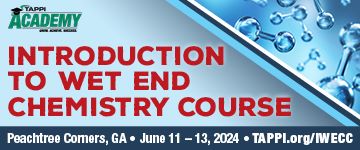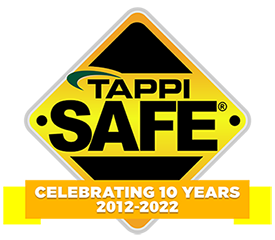 Search
Search
Use the search bar or filters below to find any TAPPI product or publication.
Filters
Content Type
Publications
Level of Knowledge
Committees
Collections
Journal articles

Papermaking Potential of Novel Structured PCC Fillers with Enhanced Refractive Index, TAPPI JOURNAL January 2010
Papermaking Potential of Novel Structured PCC Fillers with Enhanced Refractive Index, TAPPI JOURNAL January 2010
Journal articles

Calendering Effects on Coating Pore Structure and Ink Setting Behavior, TAPPI JOURNAL January 2010
Calendering Effects on Coating Pore Structure and Ink Setting Behavior, TAPPI JOURNAL January 2010
Journal articles

Experimental and statistical investigation of drying effects on coated offset paper quality, Solutions! & TAPPI JOURNAL, July 2004, Vol. 3(7) (494KB)
Experimental and statistical investigation of drying effects on coated offset paper quality, Solutions! & TAPPI JOURNAL, July 2004, Vol. 3(7) (494KB)
Journal articles

Superhydrophobic paper coating containing nonconventional clay, TAPPI JOURNAL November 2010
Superhydrophobic paper coating containing nonconventional clay, TAPPI JOURNAL November 2010
Journal articles

Vibration analysis applied to low-speed machines in the pulp and paper industry, TAPPI JOURNAL, May 2002, Vol. 1(3) (406KB)
Vibration analysis applied to low-speed machines in the pulp and paper industry, TAPPI JOURNAL, May 2002, Vol. 1(3) (406KB)
Journal articles

Determination of drainage resistance coefficients under known shear rate, TAPPI JOURNAL, August 2002 (268KB)
Determination of drainage resistance coefficients under known shear rate, Solutions! & TAPPI JOURNAL, August 2002 (268KB)
Journal articles

Data for better maintenance plans and investments policy, Solutions! & TAPPI JOURNAL, August 2003, Vol. 2(8) (354KB)
Data for better maintenance plans and investments policy, Solutions! & TAPPI JOURNAL, August 2003, Vol. 2(8) (354KB)
Journal articles

PET Recyclable Polymer for Making Paper Washbowls, TAPPI JOURNAL May 2008
PET Recyclable Polymer for Making Paper Washbowls, TAPPI JOURNAL May 2008
Journal articles

Optimization of Rectangular Pulp Stock Mixing Chest Dimensions Using Dynamic Tests, TAPPI JOURNAL, February 2007
Optimization of Rectangular Pulp Stock Mixing Chest Dimensions Using Dynamic Tests, TAPPI JOURNAL, February 2007
Journal articles

Characterization of BCTMP fines and their effect on sizing, TAPPI JOURNAL, September 2002 (342KB)
Characterization of BCTMP fines and their effect on sizing, Solutions! & TAPPI JOURNAL, September 2002 (342KB)






